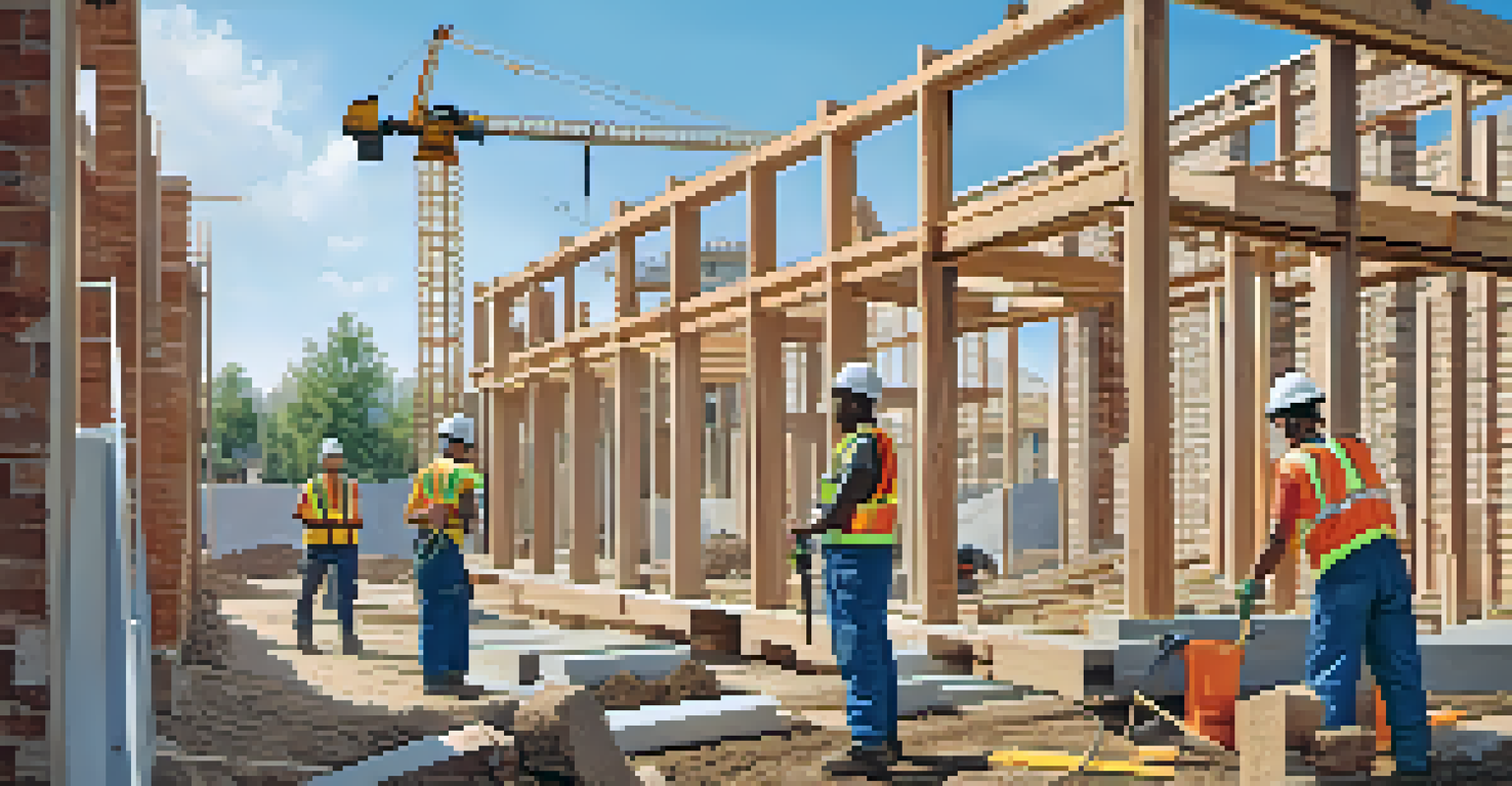Analyzing Housing Supply and Economic Cycles

The Basics: Understanding Housing Supply
Housing supply refers to the total number of residential properties available for sale or rent in a market. This includes new constructions, existing homes, and rental units. A stable housing supply is crucial for maintaining affordable housing options, as it directly influences prices and availability.
The greatest shortcoming of the human race is our inability to understand the exponential function.
When housing supply is high, buyers and renters have more choices, which can drive down prices. Conversely, a low supply can lead to bidding wars and inflated prices, making it harder for individuals to find affordable housing. Understanding these dynamics is essential for both consumers and investors in the real estate market.
Additionally, housing supply can be influenced by various factors, including government policies, economic conditions, and population growth. By analyzing these elements, we can better understand the overall health of the housing market and its implications for the economy.
Economic Cycles: What Are They?
Economic cycles refer to the fluctuations in economic activity that occur over time, typically characterized by periods of expansion and contraction. These cycles can affect various sectors, including housing, as they influence employment rates, consumer confidence, and spending behaviors. Understanding economic cycles is crucial for investors and policymakers alike.

During periods of economic expansion, consumers generally have more disposable income, which can lead to increased demand for housing. Conversely, during a recession, demand often decreases as people may lose jobs or become more cautious about spending. This ebb and flow directly impacts housing supply and pricing strategies.
Housing Supply Affects Affordability
The availability of residential properties directly influences market prices and the accessibility of affordable housing options.
Recognizing the signs of these cycles can provide valuable insights for those involved in the housing market. By understanding when the economy is likely to expand or contract, stakeholders can make informed decisions about buying, selling, or investing in real estate.
The Relationship Between Housing Supply and Economic Cycles
The relationship between housing supply and economic cycles is a complex dance. During economic growth, increased demand for housing can lead to a surge in new construction, thus raising the overall supply. However, if the supply does not keep pace with demand, prices can escalate, potentially leading to a housing bubble.
Real estate cannot be lost or stolen, nor can it be carried away. Purchased with common sense, paid for in full, and managed with reasonable care, it is about the safest investment in the world.
In contrast, during economic downturns, construction often slows, which can exacerbate the housing supply issue. If people are unable to buy homes, the market may face a surplus of unsold properties, resulting in falling prices and stalled construction projects. This cyclical nature can affect long-term housing strategies for developers and investors.
Understanding this relationship allows stakeholders to anticipate market shifts and adjust their strategies accordingly. By keeping a close eye on economic indicators and housing trends, individuals and businesses can better navigate the complexities of the housing market.
Key Indicators of Housing Supply
Several key indicators can help assess housing supply, including housing starts, permits issued, and inventory levels. Housing starts refer to the number of new residential construction projects that have begun over a specific period. An increase in housing starts typically indicates a healthy housing market responding to demand.
Permits issued are another crucial indicator, as they reflect future construction activity. A rise in permits suggests that developers are confident in the market, anticipating continued demand. Meanwhile, inventory levels, or the number of homes available for sale, provide insight into how well supply meets demand.
Economic Cycles Impact Housing Demand
Fluctuations in economic activity lead to changes in consumer confidence and spending, which in turn affect housing demand and supply.
Monitoring these indicators can help potential buyers, sellers, and investors make informed decisions. By understanding the current state of housing supply, stakeholders can better gauge market conditions and identify opportunities for growth or investment.
Impact of Interest Rates on Housing Supply
Interest rates play a significant role in influencing housing supply. When interest rates are low, borrowing becomes more affordable, which can increase demand for housing. This increased demand can lead to more construction, thus expanding housing supply as developers rush to meet the needs of eager buyers.
Conversely, when interest rates rise, borrowing costs increase, potentially dampening demand for new homes. Higher rates can lead to a slowdown in both home sales and construction, resulting in a tighter housing supply. This relationship highlights the importance of monitoring interest rate trends for anyone involved in the housing market.
Ultimately, understanding how interest rates affect housing supply can equip buyers and investors with the knowledge needed to make strategic decisions. By anticipating changes in the market, stakeholders can position themselves better during both favorable and challenging economic conditions.
Government Policies and Their Influence
Government policies can significantly impact housing supply through zoning laws, tax incentives, and subsidies for builders. Zoning laws dictate how land can be used, influencing the types of housing that can be constructed in a given area. Relaxing these laws can lead to more housing development, while strict regulations can stifle growth.
Tax incentives for builders can also encourage new construction, increasing the overall supply of housing. For example, programs that offer tax breaks for affordable housing projects can lead to more options for lower-income families. Understanding these policies can help stakeholders navigate the complexities of the housing market.
Interest Rates Shape Housing Supply
Variations in interest rates significantly influence borrowing costs, impacting demand for homes and the overall housing supply.
Moreover, government intervention can play a crucial role during economic downturns. By implementing measures aimed at stimulating housing construction, policymakers can help stabilize the market and prevent further declines in supply and pricing.
Future Trends in Housing Supply and Economic Cycles
Looking ahead, several trends are shaping the future of housing supply in relation to economic cycles. One significant trend is the increasing focus on sustainable building practices, which can influence supply by changing construction methods and materials. As demand for eco-friendly homes grows, developers may adapt their strategies to meet these preferences.
Additionally, the rise of remote work is reshaping housing demand, as people seek homes in suburban or rural areas. This shift can alter the landscape of housing supply, prompting developers to explore new markets and adapt to changing consumer preferences. Staying attuned to these trends is essential for stakeholders in the housing market.

As we move forward, understanding the interplay between housing supply and economic cycles will be more crucial than ever. By keeping an eye on emerging trends and adapting strategies accordingly, individuals and businesses can navigate the evolving landscape of the housing market.